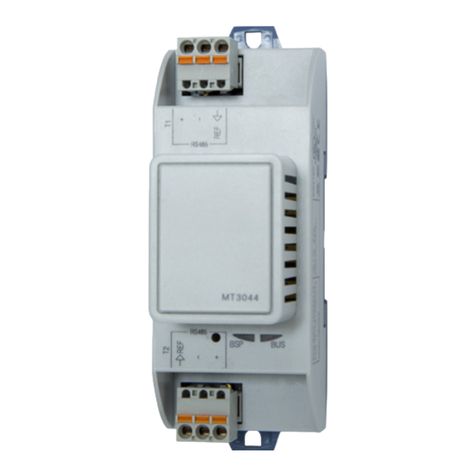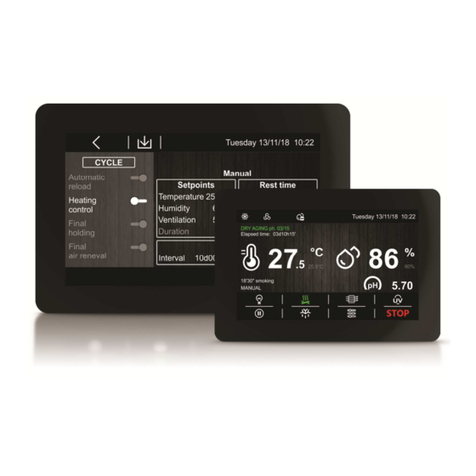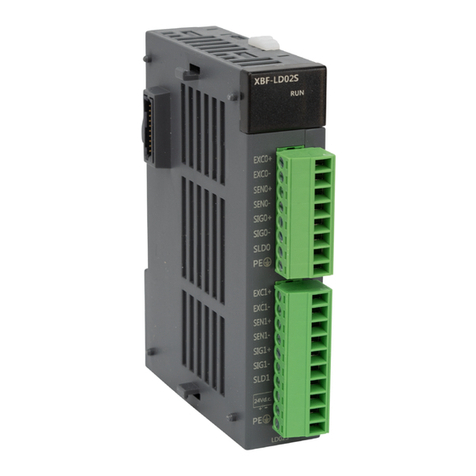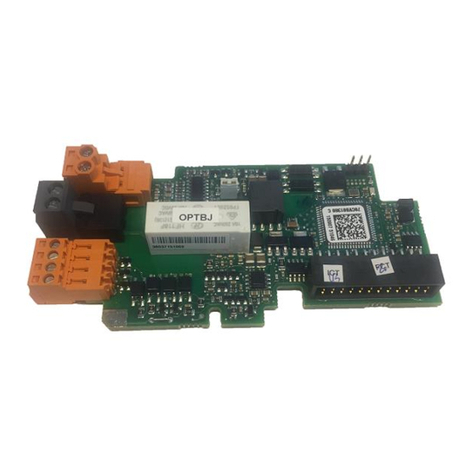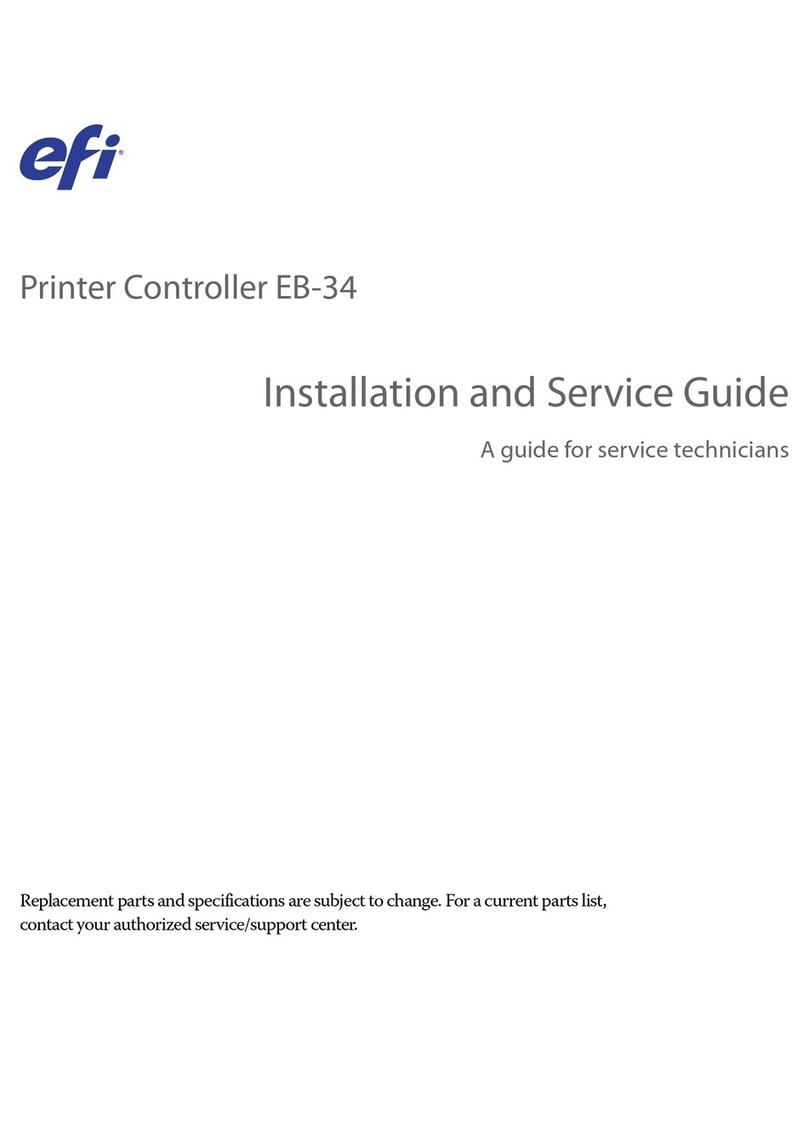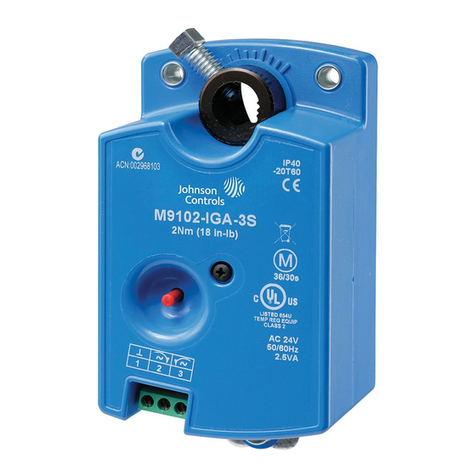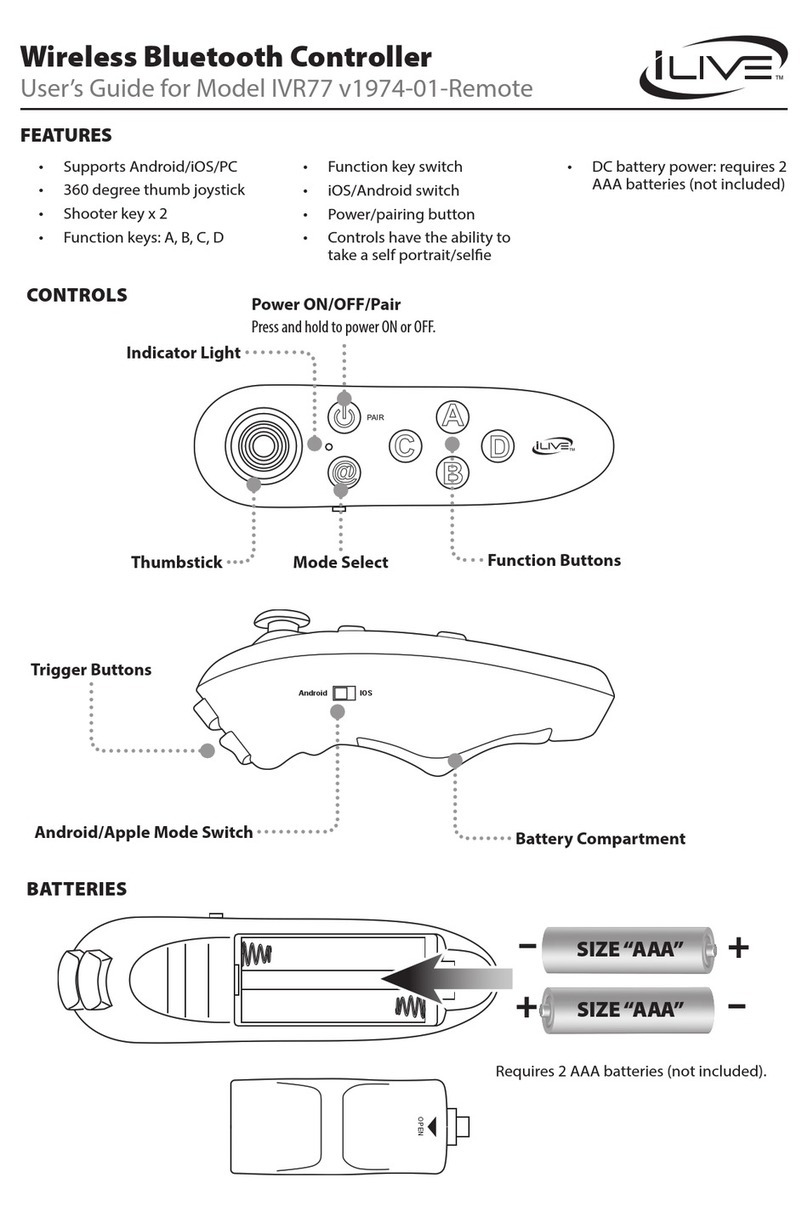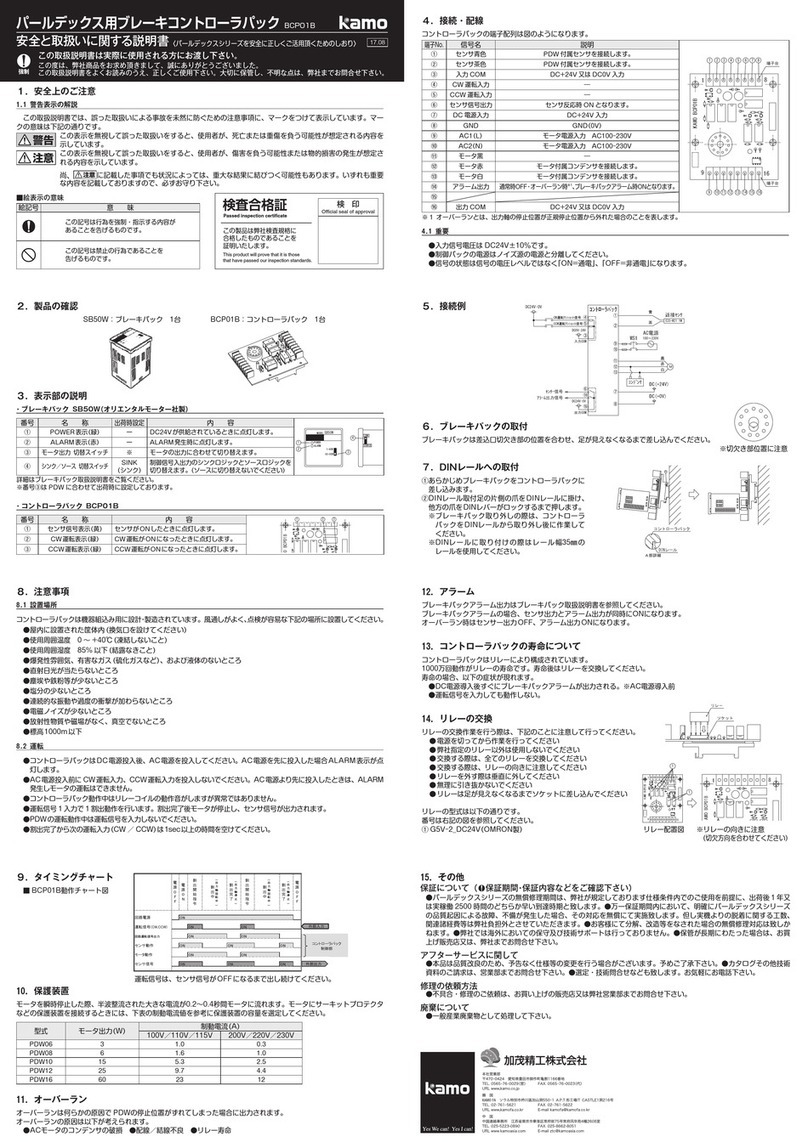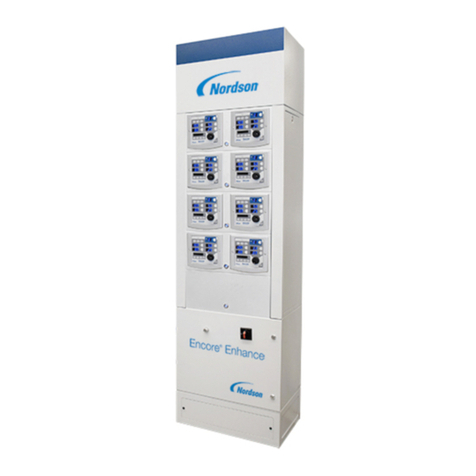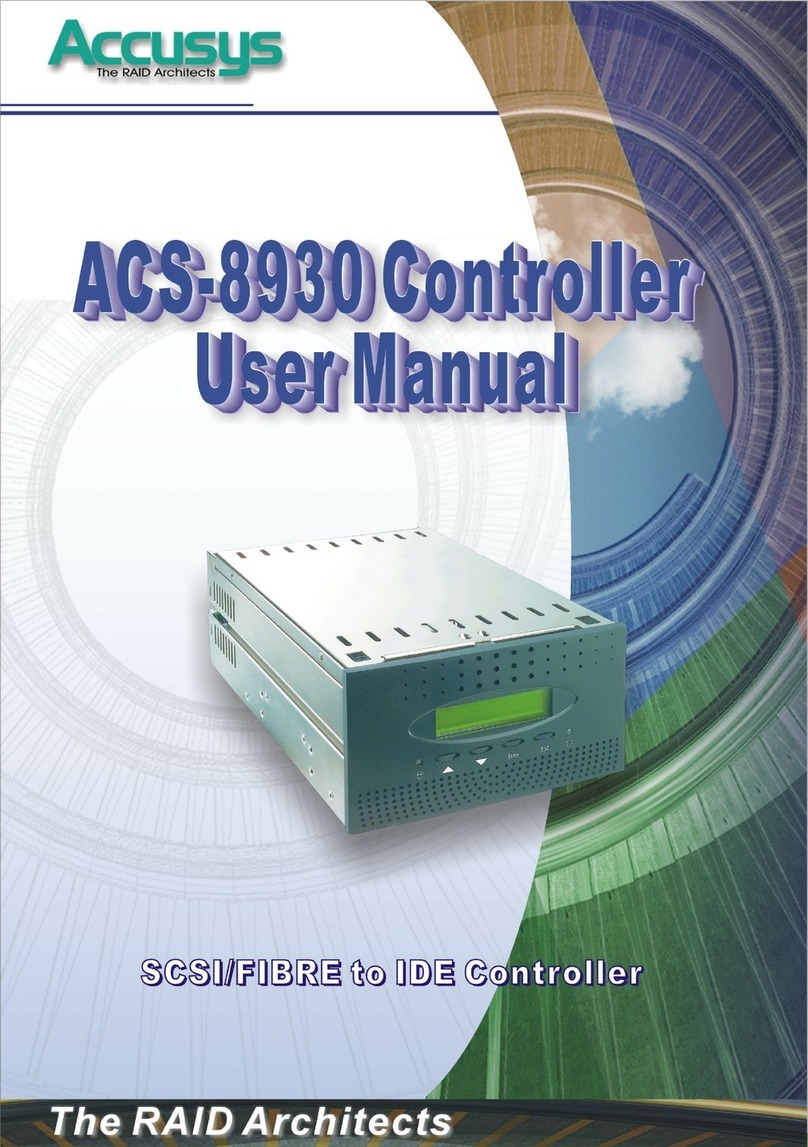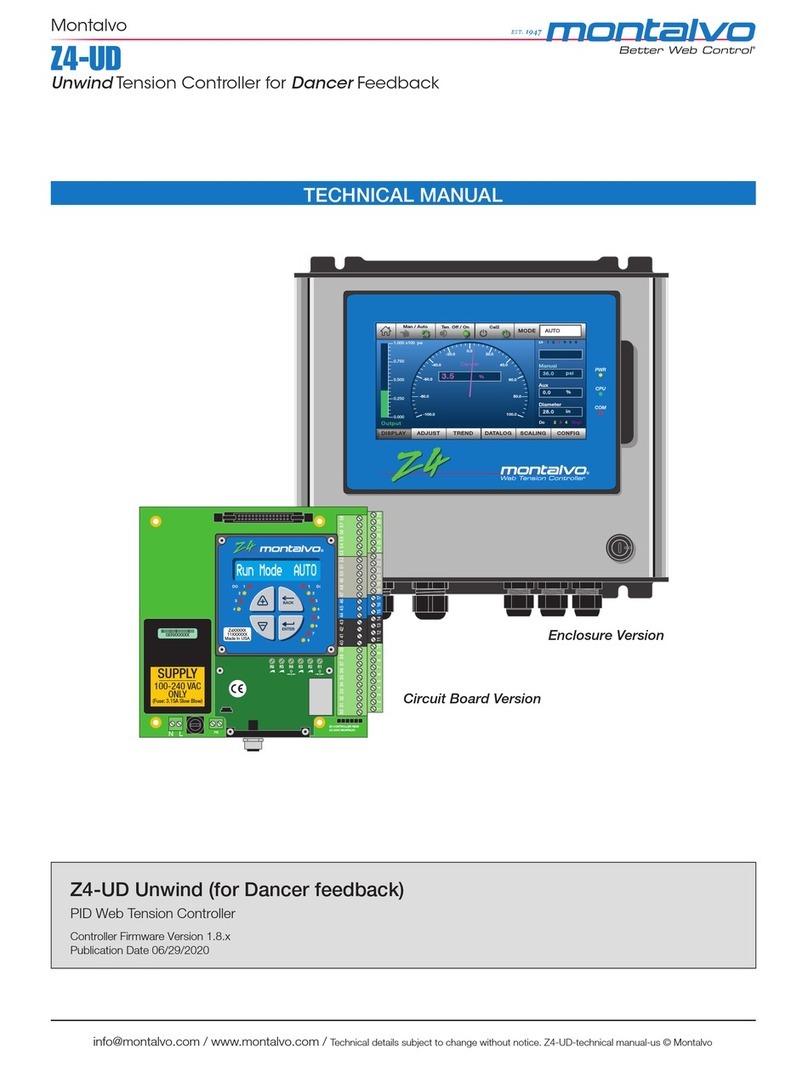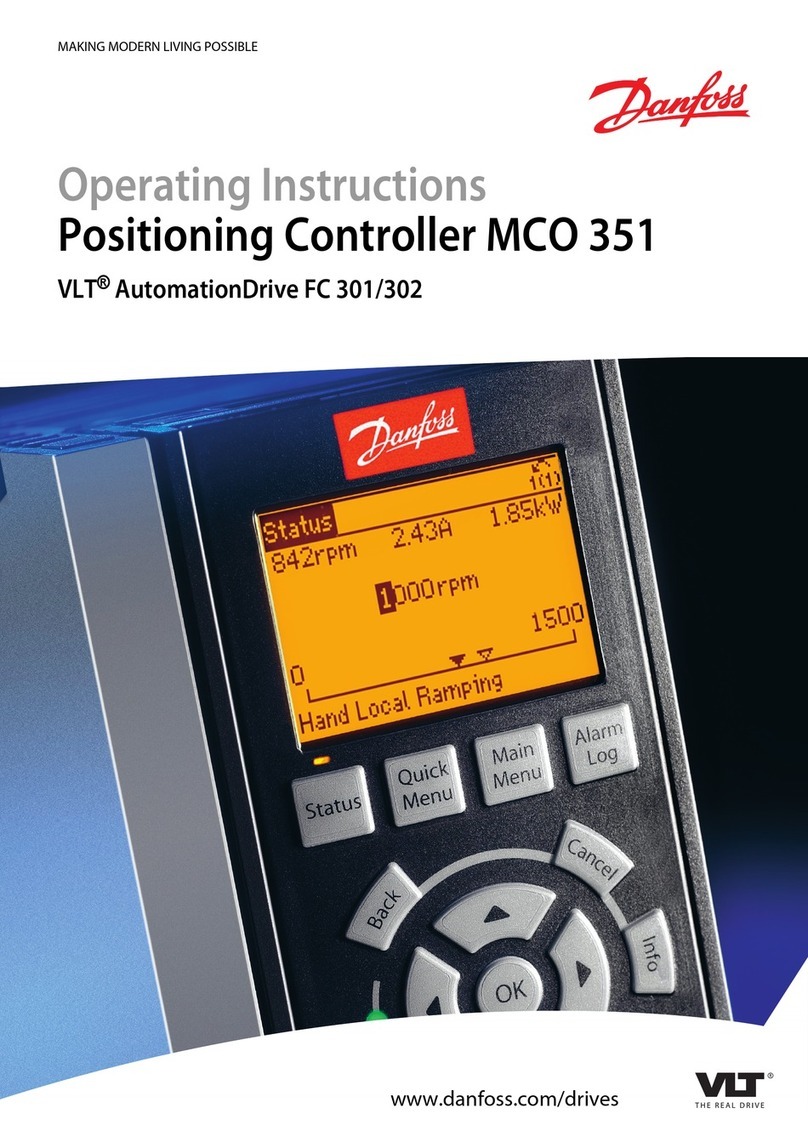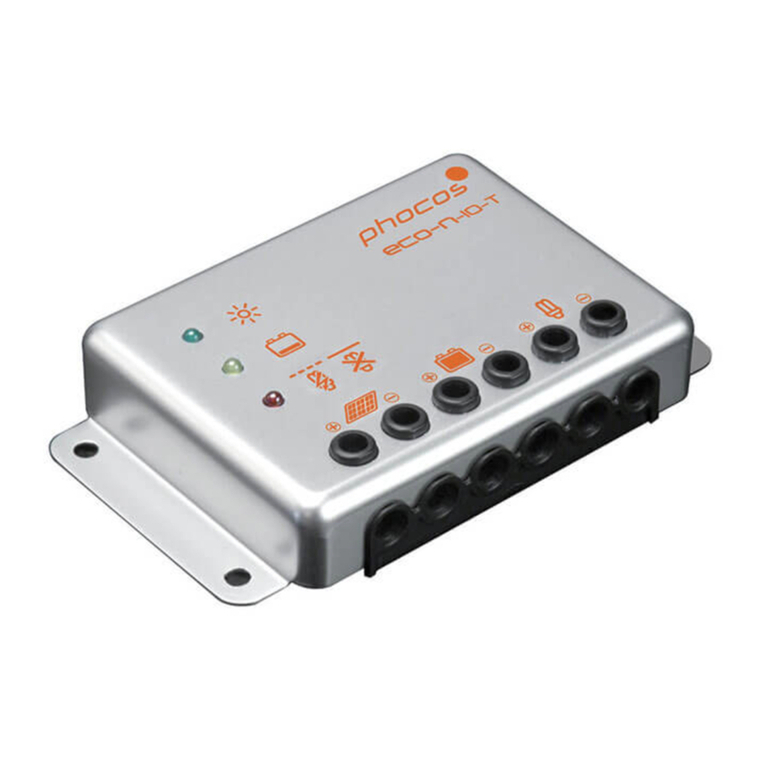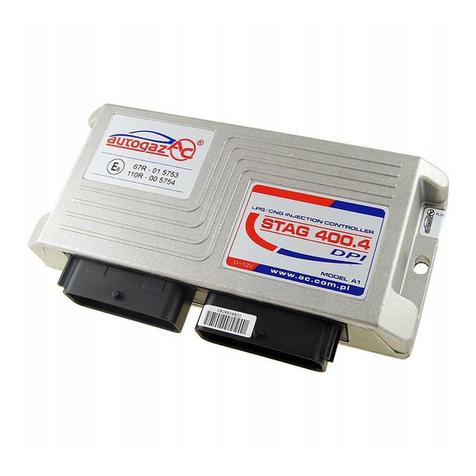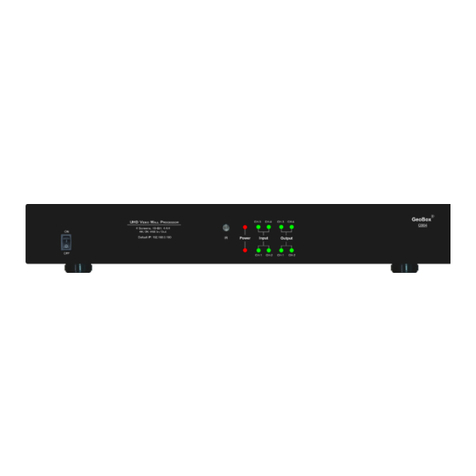MWP W4B-120C User manual

CONTROLLER
MWP W4B-120C
BATERÍES
DC 48 V, 24V, 12V
MWP W4B-120C
Installation and Operation Manual
CE Mark
Safety Approved
C-Trick Mark
Safety Approved


1-W4B-120CDescription........................... 5
1.1VersionsandRatings........................... 5
1.2Operating ................................... 5
1.3Adjustability.................................. 5
1.4GeneralUse.................................. 5
2- W4B-120C Installation . . . . . . . . . . . . . . . . . . . . . . . . . . . 7
2.1GeneralInformation............................ 7
2.2InstallationOverview........................... 7
2.3 Control Terminal Connection . . . . . . . . . . . . . . . . . . . . . 8
2.4InstallationSteps.............................. 8
3- Front Cover of W4B-120C Operation . . . . . . . . . . . . . . . . 13
3.1LEDStatusIndicators........................... 13
3.2 Charge Control or Diversion Control Mode Indications 13
3.3 Equalization Mode Indication . . . . . . . . . . . . . . . . . . . . . 14
“Equalization LED” Blinking Orange: . . . . . . . . . . . . . . . . . . 14
3.4FaultModeIndication........................... 15
3.5LCDMeterDisplays ............................ 15
4-BatteryCharging............................... 17
4.1BatteryCharging .............................. 17
4.2 Standard Battery Charging Programs. . . . . . . . . . . . . . . 18
5 Diversion Charge Control. . . . . . . . . . . . . . . . . . . . . . . . . . 19
5.1 Diversion Charge Control . . . . . . . . . . . . . . . . . . . . 19
5.2 Diversion Current Ratings . . . . . . . . . . . . . . . . . . . . . . . 19
5.3 Standard Diversion Battery Charging Programs . . . . . . . 20
5.4 Selecting the Diversion Load . . . . . . . . . . . . . . . . . . . . . 21
5.5Capacity..................................... 21
6TroubleShooting................................ 23
7BatteryInformation.............................. 24
7.1SealedBatteries............................... 24
7.2FloodedBatteries.............................. 25
7.4 Nicad and NiFe Batteries . . . . . . . . . . . . . . . . . . . . . . . . 26


USER MANUAL
5
1- W4B-120C Description
The W4B-120C is a technically advanced wind charger. It includes DC diversion charge
control, so user has to install the diversion load with it.
The manual will help you to become familiar with the W4B-120C’s features and capabilities.
Some of these follow:
• LCD meter with easy to read messages.
• DIP switch to set up the wind charger for its intended use. All major functions can be
set with DIP switches.
• Rated for 12, 24, 48 voltage systems and 120 amps current.
• Eight standard charging with DIP switches.
• Continuous self-testing with fault notification
• LED indications and pushbutton functions.
1.1 Versions and Ratings
W4B-120C-120 (WS-120C):
• Rated for maximum 120 amps continuous current
• Rated for 12, 24, 48 Voltage DC systems
• Diversion Load (optional)
1.2 Operating
The W4B-120C will manage battery charging by 3-phase wind turbine from the battery to a
dedicated diversion load.
1.3 Adjustability
Eight DIP switches permit the following parameters to be adjusted at the installation site:
1.4 General Use
DIP switch Wind Charger
1 Always in the OFF position
2 3 Select Battery Voltage
OFF OFF 48V system
ON OFF 24V system
OFF ON 12V system
4~6 Standard battery charging programs
7 (OFF) Manual Equalization
(ON) Auto Equalization
8 Always in the OFF position

6
• The W4B-120C is configured for negative ground systems. There are no parts in the
wind charger’s negative leg. The enclosure can be grounded using the ground termi-
nal in the wiring compartment.
• There are fuses or mechanical parts inside the W4B-120C to reset or change.
The W4B-120C is rated for indoor use. The wind charger is protected by conformal
coated circuit boards, stainless steel hardware, anodized aluminum, and a powder
coated enclosure, but it is not rated for corrosive environments or water entry.
• The construction of the W4B-120C is 100% solid state.
With bulk charging, absorption, float and equalization stages.
• The W4B-120C will accurately measure time over long intervals to manage events
such as automatic equalizations or battery service notification.
• LED’s, a pushbutton, and LCD meters provide both status information and various
manual operations.

USER MANUAL
7
2- W4B-120C Installation
The installation instructions describe wind battery charging.
2.1 General Information
The mounting location is important to the performance and operating life of the wind char-
ger. The environment must be dry and protected as noted below. The wind charger may
be installed in a ventilated enclosure with sealed batteries, but never in a sealed battery
enclosure or with vented batteries.
2.2 Installation Overview
The installation is straightforward, but it is important that each step is done correctly and
safely. A mistake can lead to dangerous voltage and current levels. Be sure to carefully fo-
llow each instruction in Section 2.3 and observe all cautions and warnings.
The following diagrams provide an overview of the connections and the proper order:
Collector
(Wind generator
Output Frequency)
1 2 1 2 3
WIND INPUT
Battery
Positive +
Battery
Negative -
Diversion load
Positive + Diversion load
Negative -
PE
DIP
Switches

8
2.3 Control Terminal Connection
Install the counter with Collector 1 and Collector 2 by yourself and then you will know the wind speed of the Wind Turbine (rpm). The
output of the Collector 1 and 2 is the Wind Generator Output Frequency.
2.4 Installation Steps
The W4B-120C wind charger must be installed properly and in accordance with the local and
national electrical codes. It is also important that the installation be done safely, correctly and
completely to realize all the benefits that the W4B-120C can provide for your wind system.
Before starting the installation, review these safety notes:
• Do not exceed a battery voltage of 48V (nominal). Do not use a battery less than 12V.
• Charge only 12, 24, or 48 volt lead-acid batteries when using the standard battery chargin-
gprograms or NI-CAD batteries when DIP switch number 4~6 is ON position in the W4B-
120C.
• Verify the nominal charging voltage is the same as the nominal battery voltage.
• Do not install a W4B-120C in a sealed compartment with batteries.
Name Description
Collector 1 Positive connection of the Wind Generator Output Frequency
Collector 2 Negative connection of the Wind Generator Output Frequency
WIND INPUT 1 Connecting terminal for Wind Turbine
WIND INPUT 2 Connecting terminal for Wind Turbine
WIND INPUT 3 Connecting terminal for Wind Turbine
Battery + Battery cable Positive connection
Battery— Battery cable Negative connection
DIVERSION LOAD + Connecting terminal for Diversion load
DIVERSION LOAD— Connecting terminal for Diversion load
PE Connecting terminal for Ground
Dip Switch 1 Always in the OFF position
Dip Switch 2, 3 Selection of battery voltage for 12V or 24V or 48V system
Dip Switch 4, 5, 6 Battery charging algorithm
Dip Switch 7 Auto or Manual Equalization
Dip Switch 8 Always in the OFF position

USER MANUAL
9
• Never open the W4B-120C access cover unless both the wind turbine and battery
power has been disconnected.
• Never allow the Wind Turbine to be connected to the W4B-120C with the battery and
Diversion load disconnected. This can be a dangerous condition with high voltage
present at the terminals.
2.4.1 Mounting
Mounting Dimensions
• Locate the W4B-120C on a wall protected from direct sun, high temperatures, and
water. Do not install in a confined area where battery
gasses can accumulate.
• When mounting the W4B-120C, make sure the air flow
around the controller and heat sink is not obstructed.
There should be open space above and below the heat
sink, and at least 75 mm (3 inches) clearance around the
heat sink to allow free air flow for cooling.
• Before starting the installation, place the W4B-120C on
the wall where it will be mounted and determine where
the wires will enter the controller.
Unit: mm
Unit: mm

10
2.4.2 Diversion Charge Control DIP Switch Settings
The 8 DIP switches are located on the top of the PE terminal. Each switch is numbe-
red. The wind battery charging functions that can be adjusted with the DIP switches
follow:
DIP Switch Functions
As shown in the diagram, all the positions are in the “OFF” position except switch
number 3 and 7 which are in the “ON” position.
NOTE: The DIP switches should be changed only when there is no power to the wind char-
ger. Turn off disconnect switches and remove all power to the wind charger before chan-
ging a DIP switch. A fault will be indicated if a switch is changed while the wind charger is
powered.
CAUTION 1: The W4B-120C is shipped with all the switches in the “OFF” position. Each
switch position must be confirmed during installation. A wrong setting could cause damage
to the battery or other system components.
CAUTION 2: To change a switch from OFF to ON, slide the switch up toward the top of the
wind charger. Make sure each switch is fully in the ON or OFF position.
CAUTION 3: DIP Switch Number 1 and Number 8 are always in the OFF position.
DIP Switch Number 1 and Number 8: Always in the OFF position
DIP Switch Number 2, 3-System voltage
Switch 2 Switch 3 System Voltage
OFF OFF 48V system
ON OFF 24V system
OFF ON 12V system

USER MANUAL
11
Select one of the 7 standard battery charging algorithms, or select NiCad to determine the
charging of the battery.
The above setting voltage value is in the condition of 12V system. The voltage will be twi-
ce of above values in the 24V system and it will be four times of above values in the 48V
system.
Refer to section 7.0 of the manual for battery charging information.
The 7 standard charging algorithms above are described in section 4.2-standard battery
charging programs.
DIP Switch Number 7 (ON): Auto Equalization;
DIP Switch Number 7 (OFF): Manual Equalization
2.4.3 Finish Installation
Inspect for tools and loose wires that may have been left inside the enclosure.
Check the power conductors to make sure they are located in the lower part of the wiring
compartment and will not interfere with the cover and the LCD meter assembly.
NOTE: If the power conductors are bent upwards and touch the LCD meter assembly, pres-
sing the cover down on the wires can damage the meter.
• Carefully place the cover back on the wind charger and install the one cover screw.
• Closely observe the system behavior and battery charging for 2 to 4 weeks to confirm
the installation is correct and the system is operating as expected.
DIP Switch Number 4, 5, 6-Battery charging algorithm
DIPSW-4 DIP
SW-5
DIP
SW-6
Bulk
voltage
Float
voltage
Equalize
Voltage
Equali-
ze Time
(hours)
Equalize
Interval
(days)
OFF OFF OFF 14.0V 13.4V None - -
OFF OFF ON 14.1V 13.4V 14.2V 1 28
OFF ON OFF 14.3V 13.4V 14.4V 2 28
OFF ON ON 14.4V 13.4V 15.1V 3 28
ON OFF OFF 14.6V 13.4V 15.3V 3 28
ON OFF ON 14.8V 13.4V 15.3V 3 28
ON ON OFF 15.0V 13.4V 15.3V 3 14
ON ON ON 16.0V 14.5V - - -


USER MANUAL
13
3- Front Cover of W4B-120C Operation
There are 4 LEDs, 1 LCD Meter and 2 pushbuttons on W4B-120C front cover. The details
are described as follows:
3.1 LED Status Indicators
Four LED indicate operating status of the wind charger. When the wind charger works, the
charge mode (green) LED will blink. The Load Control Mode (red) LED is no function. When
battery equalization is in process, the Equalization (orange) LED is blinking. A red LED solid
or blinking indicates a fault condition.
3.2 Charge Control or Diversion Control Mode Indications
“Charge Mode LED” Solid Green:
The battery is being charged in the FLOAT stage. The status LED remains ON solid
unless the batteries drop below the float voltage setting for an accumulative period of
one hour. This allows the user to confirm that the system reached the float stage during
the charging process when checked at the end of the day. Reaching the float stage
frequently is a good indication of proper system operation and will maximize battery life
and performance.

14
“Charge Mode LED” Blinking Green:
The wind charger is CHARGE CONTROL or DIVERSION CONTROL Mode and the battery
is not fully charged. AS the battery voltage approaches the BULK setting, the status LED
will blink green several times (up to five) and then pause, indicating the battery voltage is
approaching the BULK setting and provides an indication of the battery condition. Refer to
the table 1 to determine the battery voltage.
NOTE: A single green flash indicates the battery is below the bulk voltage setting. It does
NOT indicate the batteries are charging.
3.3 Equalization Mode Indication
“Equalization LED” Blinking Orange:
The wind charger is in the Equalization Mode. It will automatically stop the equalization
process after accumulating setting Equalize Time of operation at Equalize Voltage above
the BULK setting.
The user can stop the equalization process at any time by pressing the reset pushbutton
until the status LED stops.
Battery Voltage (Using LED Status Indicator)
LED Status Green LED (Charge/Diver-
sion Mode)
Always ON Battery at FLOAT setting
5 Blinks Battery at BULK setting
Bulk Setting Minus (-)
4 Blinks 0.25 VDC 0.50 VDC 1.00 VDC
3 Blinks 0.50 VDC 1.00 VDC 2.00 VDC
2 Blinks 0.75 VDC 1.50 VDC 3.00 VDC
1 Blinks > 0.75 VDC > 1.50 VDC > 3.00 VDC
Below Bulk Below Bulk Below Bulk
DC Voltage 12 Volts 24 Volts 48 Volts
Table 1 Battery Voltage LED Indication

USER MANUAL
15
3.4 Fault Mode Indication
Solid Red:
The wind charger detects an over-current condition and the battery is disconnected. The
wind charger will try to automatically restart the battery after a 10 second delay. If the wind
charger will not restart, turn off all batteries and press the reset pushbutton. A delay up to
five seconds may occur before the wind charger attempts to restart after pressing the reset
pushbutton. The data exchange between CPU and the display panel can be detected a fault
by the wind charger by showing alarm CPF00.
3.5 LCD Meter Displays
These displays include a two-line, 32-characters LCD and Four status LED indicator.
The LCD provides the following information:
• Wind Turbine or DC Load press-through current: 0~120 amps DC
• Battery Voltage: 10.5 to 80 Volts DC
• Watts: 0 to 6000 Watts (Volts time Amps)
• Amp-hours: 0 to 655536Ah; can be reset to 0
• Totalizing amp-hours: 0 to 65536 Ah; reset to 0 when power is disconnected
• Battery charging status
• Display of BULK and FLOAT voltage setting value
• Display of Equalization Voltage, Equalization Time and Equalization Interval
• Display of heatsink temperature
• Fault Messages

16
3.5.1 LCD Displays Flow
3.5.2 Fault Messages
The LCD displays might have the following fault messages when W4B-120C stops ope-
rating.
Refer to their description and causes listed as below in order to remove the faults.

USER MANUAL
17
4- Battery Charging
4.1 Battery Charging
Selecting the best method for charging your battery together with a good maintenance pro-
gram will ensure a healthy battery and long service life. Although the W4B-120C’s battery
charging is fully automatic, the following information is important to know for getting the
best performance from your W4B-120C wind charger and battery.
4.1.1 Four Stages of Charging
Figure 4.1.1 Charging Stages
1. Bulk Charging: In this stage, the battery will accept all the current provided by the wind
system.
2. PWM Absorption: When the battery reaches the regulation voltage, the PWM begins to
hold the voltage constant. This is to avoid over-heating and over-gassing the battery. The
current will taper down to safe levels as the battery becomes more fully charged.
3. Equalization: Many batteries benefit from a periodic boost charge to stir the electrolyte,
level the cell voltages, and complete the chemical reactions.
4. Float: When the battery is fully recharged, the charging voltage is reduced to prevent
further heating or gassing of the battery.

18
4.2 Standard Battery Charging Programs
The W4B-120C provides 8 standard battery charging algorithms (programs) that
are selected with the DIP switches. These standard algorithms are suitable for
lead-acid batteries ranging from sealed (gel, AGM, maintenance free) to flooded
to L-16 cells and Ni-cad etc.
The table below summarizes the major parameters of the standard charging algorithms.
Note that all the voltages are for 12V systems (24V = 2X, 48V = 4X)
A. Battery Type – These are generic lead-acid and Ni-cad battery types. See Section 8.0 for
more information about battery types and appropriate battery charging.
B. BULK Voltage –This is the PWM Absorption stage with constant voltage charging.
The “PWM voltage” is the maximum battery voltage that will be held constant. As the
battery becomes more charged, the charging current tapers down until the battery is
fully charged.
C. Float Voltage –When the battery is fully charged, the charging voltage will be reduced to
13.4 volts for all battery types.
D. Equalization Voltage –During an equalization cycle, the charging voltage will be held
constant at this voltage.
All values are 25ºC (77ºF).
A B C D E
DIP Equalize
Switches Battery Type Bulk Float Equalize Time
(4-5-6) Voltage Voltage Voltage (hours)
off-off-off 1 – Sealed 14.0 13.4 None -
off-off-on 2 – Sealed 14.1 13.4 14.2 1
off-on-off 3 - Sealed 14.3 13.4 14.4 2
off-on-on 4 - Flooded 14.4 13.4 15.1 3
on-off-off 5 - Flooded 14.6 13.4 15.3 3
on-off-on 6 - Flooded 14.8 13.4 15.3 3
on-on-off 7 - L-16 15.0 13.4 15.3 3
on-on-on 8-NiCad 16.0 14.5 None -
Table 4.2 Standard Battery Charging Programs

USER MANUAL
19
E. Equalization Time –The charging at the selected equalization voltage will continue for this
number of hours. This may take more than one day to complete.
F. Equalization Interval –Equalizations are typically done once a month. Most of the
cycles are 28 days so the equalization will begin on the same day of the month. It can
be set by Dip Switch 4~6 for different interval days.
Each new cycle will be reset as the equalization starts so that a setting day period will
be maintained.
These 8 standard battery charging algorithms will perform well for the majority of battery
systems.
5 Diversion Charge Control
As the battery becomes fully charged, the W4B-120C will divert excess current from
the battery to a dedicated diversion load.
This diversion load must be large enough to absorb all the excess energy, but not too
large to cause a controller overload condition.
5.1 Diversion Charge Control
The W4B-120C will use PWM charging regulation to divert excess current to an external
load. As the battery becomes fully charged, the FET switches are closed for longer periods
of time to direct more current to the diversion load.
As the battery charges, the diversion duty cycle will increase. When fully charged, all the
source energy will flow into the diversion load if there are no other loads. The generating
source is typically a wind or hydro generator.
The most important factor for successful diversion charge control is the correct sizing of
the diversion load.
If you are not confident and certain about the installation, a professional installation by your
dealer is recommended.
5.2 Diversion Current Ratings
The maximum diversion load current capability for the W4B-120C WS-120C is 120 amps.
The diversion loads must be sized so that the peak load current cannot exceed the maxi-
mum rating.

20
5.3 Standard Diversion Battery Charging Programs
The SunStar provides 8 standard diversion charging algorithms (programs) that are selected
with the DIP Switches.
The table below summarizes the major parameters of the standard diversion battery charging
algorithms. Note that all the voltages are for 12V systems (24V = 2X, 48V = 4X).
A. PWM BULK Voltage - This is the PWM Absorption stage with constant voltage char-
ging. The PWM absorption voltage is the maximum battery voltage that will be held
constant.
B. Float Voltage - When the battery is fully charged, the charging voltage will be reduced to
13.4 volts for all diversion settings.
C. Equalization Voltage - During an equalization cycle, the charging voltage will be held
constant at this voltage. Equalizations are manual, and can be selected for automatic.
D. Equalization Time- Charging at the selected equalization voltage will continue for this
setting number of hours.
E. Equalization Interval - Equalizations are typically done once a month cycles can be set
in the Equalization Interval in units of days so the equalization will begin according to the
setting value. Each new cycle will be reset as the equalization starts.
All values are 25ºC (77ºF).
A B C D E
DIP Equalize
Switches Battery Type Bulk Float Equalize Time
(4-5-6) Voltage Voltage Voltage (hours)
off-off-off 1 – Sealed 14.0 13.4 None -
off-off-on 2 – Sealed 14.1 13.4 14.2 1
off-on-off 3 - Sealed 14.3 13.4 14.4 2
off-on-on 4 - Flooded 14.4 13.4 15.1 3
on-off-off 5 - Flooded 14.6 13.4 15.3 3
on-off-on 6 - Flooded 14.8 13.4 15.3 3
on-on-off 7 - L-16 15.0 13.4 15.3 3
on-on-on 8-NiCad 16.0 14.5 None -
Table 5.3 Standard Diversion Charging Programs
This manual suits for next models
2
Table of contents
